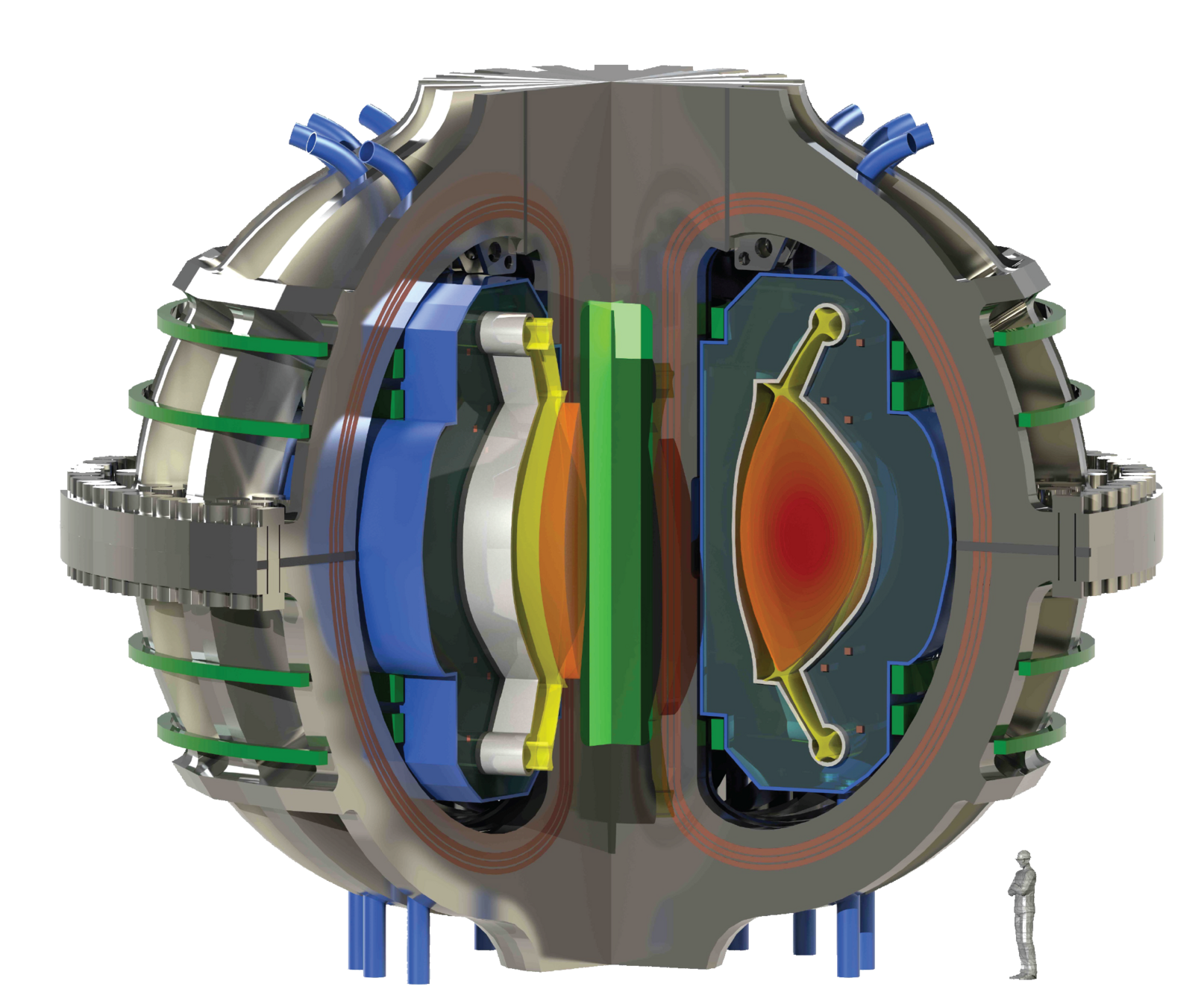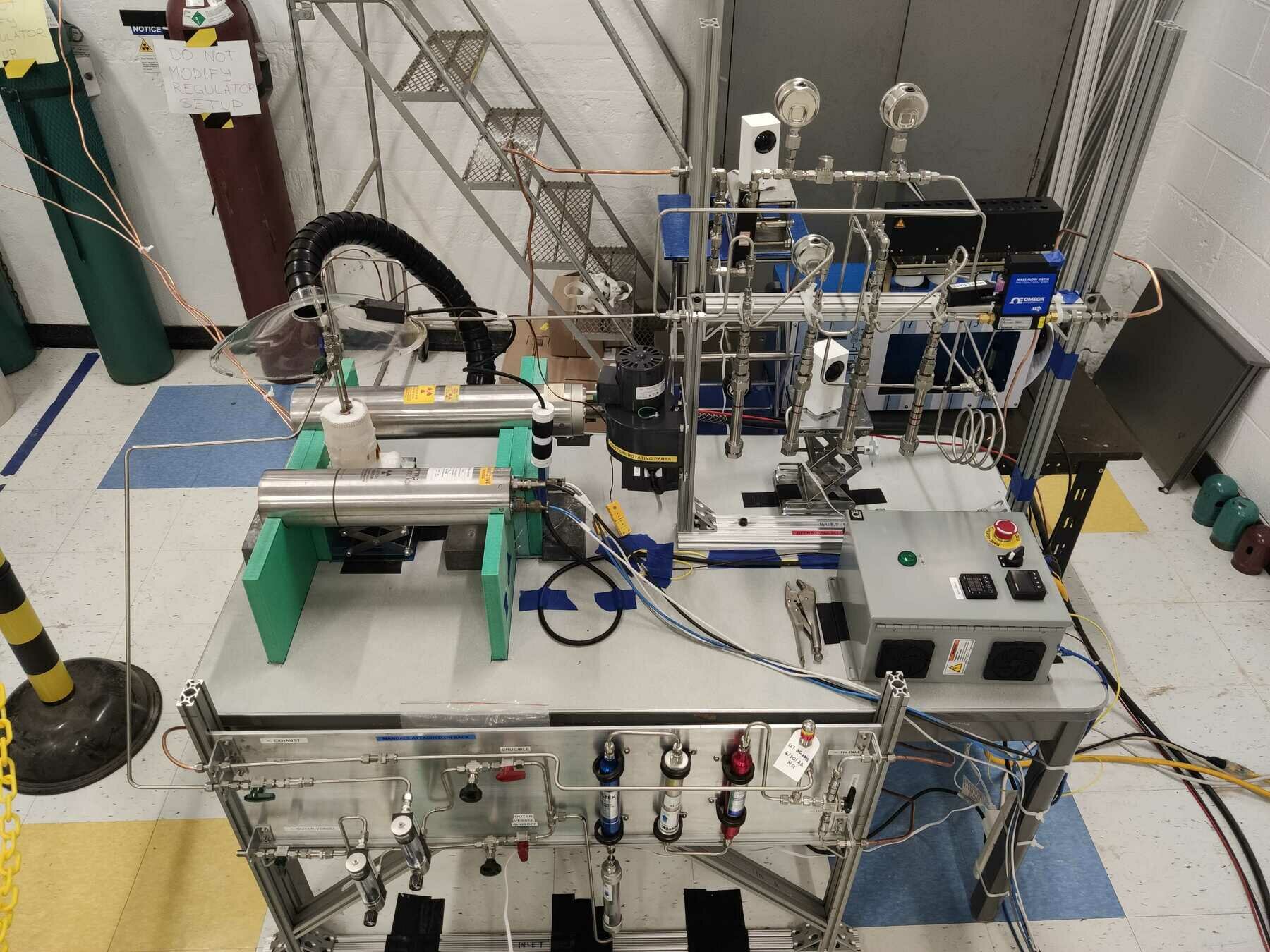LIBRA project: first tritium breeding results
Remi Delaporte-Mathurin, Nikola Goles, Colin Dunn, Emily Edwards, Samuele Meschini, Stefano Segantin, Sara Ferry, Ethan Peterson, Dennis Whyte, Edward Lamere, Kevin Woller and LIBRA collaborators

Tritium Focus Group, 28th November 2023
The tritium issue
Cost: $30,000 per gram

Half-life: 12 years
☢
❓How ❓
Lithium is used to breed tritium



⚛️Breeding tritium
🛡️Shield from neutrons
🔥Extract heat
Liquid Immersion Blanket
FLiBe
LIBRA: a demonstration of the LIB

What is the smallest blanket that can demonstrate a TBR of 1?
LIBRA
Liquid Immersion Blanket tritium Robust Accountancy
Objectives
🎯T self-sufficiency with DT neutrons
🎯Experience with molten salt handling
🎯Tritium extraction from molten salts

500L FLiBe
14 MeV neutron source
Inconel
double wall
Li + n → T + He
Neutron multiplier
The LIBRA experiment

Tritium transport
Transport mechanisms:
- Diffusion
- Advection
Release pathways:
- Release gas/liquid interface
- Permeation through walls
The LIBRA experiment
The LIBRA experiment

He
Tritium detection

The actual design is a bit more complex
LIBRA was designed to achieve TBR ≈ 1

Neutronics simulations

Let's start smaller
- 14 MeV neutron generator \( 10^{10} \) n/s
- 500 L of FLiBe
→ Never done at MIT ⚠️

The BABY programme
100 mL
ClLiF salt
Top release
Wall release
A simple 0D model is used to simulate BABY
= source - losses
inventory evolution
\(k\) mass transport coefficient
\(A\) surface area
neutron rate
Inconel 625
- 2 x 12 h irradiation
- \( \mathrm{TBR} \approx 3 \times 10^{-4} \)
- \( \Gamma_n \approx 4 \times 10^8 \) n/s (fitted)
- Mass transport coeffs. \( k_i \) (fitted)
100 mL
CLiF salt
Top release
Wall release
THIS is what we can measure!

Salt T inventory
T fluxes
Cumulative release




Salt crucible and two DT neutron sources
Tritium collection system

Temperature control
The BABY experiment breeds tritium at a smaller scale
HT, T2 → HTO
#1
#2
#3
#4

HTO, TF
HT, T2

Furnace
Tritium collection and accountancy
→ then analysed with Liquid Scintillation Counting

HTO, TF
HT, T2
15 Bq of tritium have been bred in total

Collected tritium
1 Bq = 10\(^{-15}\) mole of T
Collection effiency 99.8%

Model

Water is changed

Measurements agree with model
Cumulative tritium production agrees with model
Next experiments will provide information on the wall permeation

Cumulative tritium release (Bq)
- Still preliminary
- Change in dynamics to be explained:
- Unsteady neutron source?
- Change in mass transfer?


Cumulative tritium release (Bq)
2nd run showed comparable results
Next steps
- Improve repeatability
- Improve neutron detection and source characterisation
- FESTIM transport model (advection, tritium diffusion...)
- Increase volume of salt
- Switch to FLiBe
- Upgrade to LIBRA
100 mL
1 L
100 L
500 L
BABY
LIBRA





1L of salt
Top release gas sweep
Outer-vessel for capturing permeated tritium
Thank you!
Any question?
remidm@mit.edu